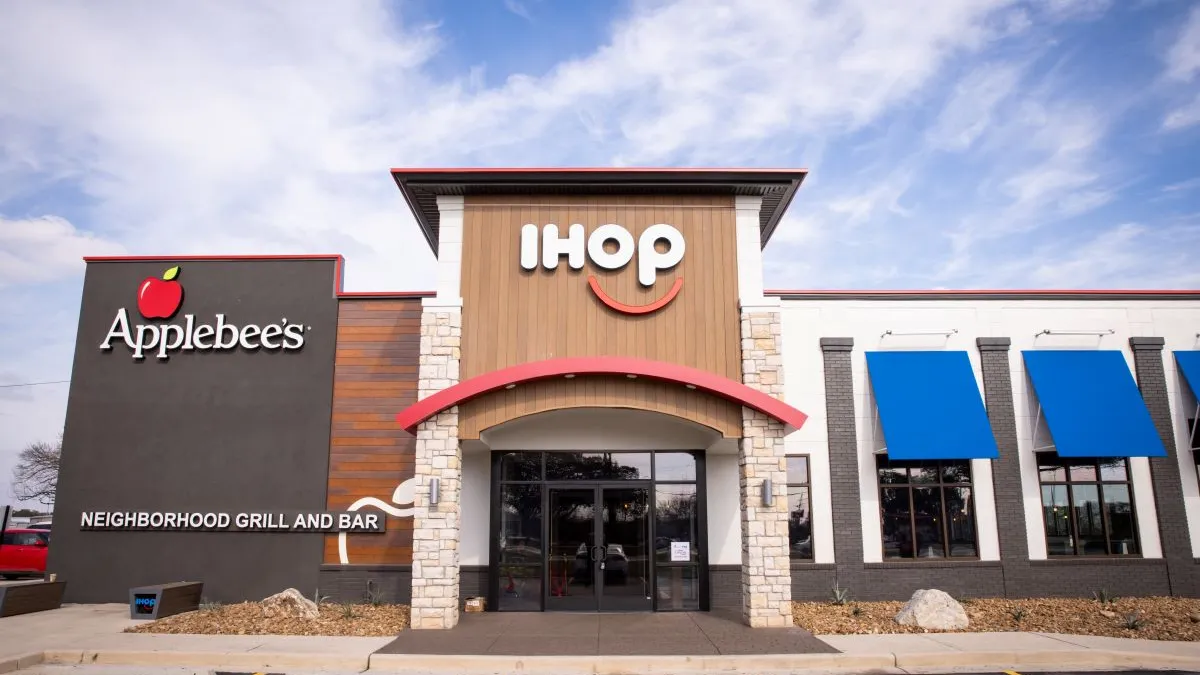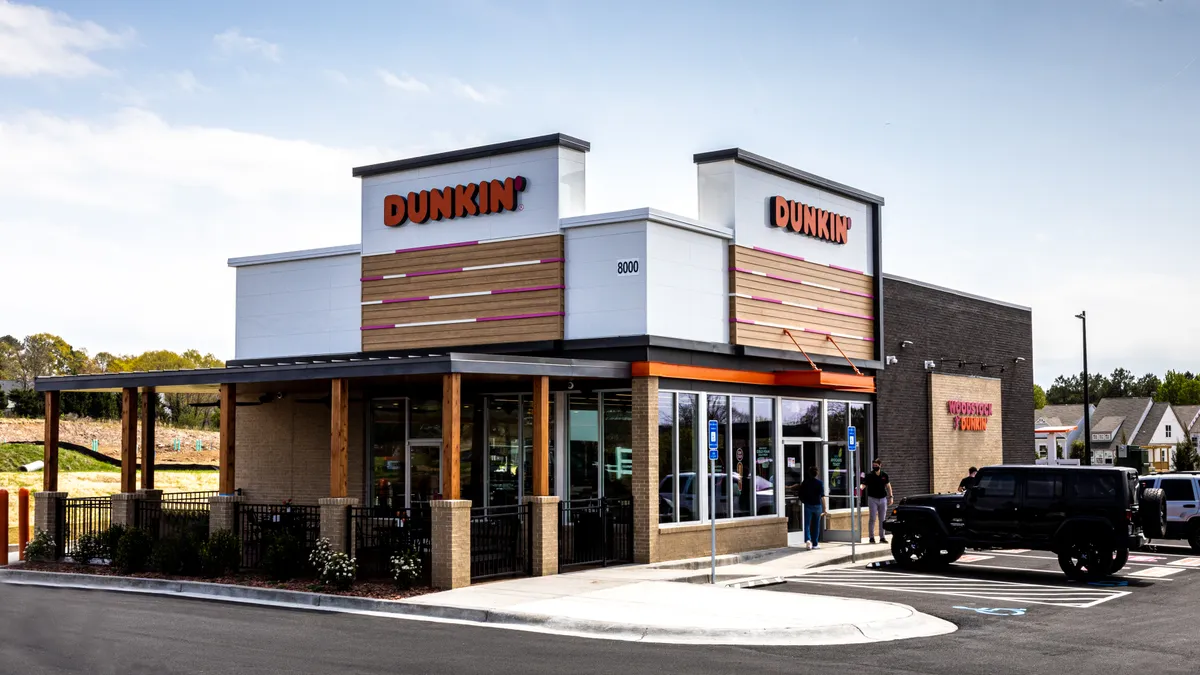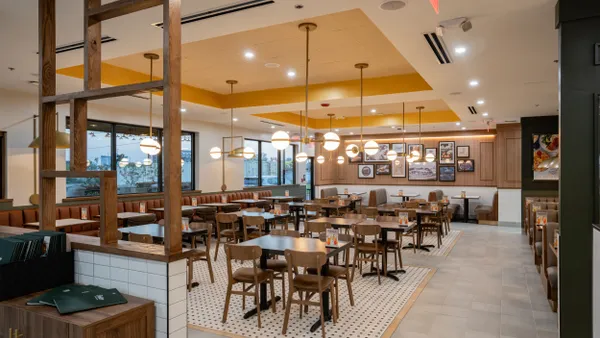Dive Brief:
- Dine Brands expects to end the year with 30 dual-branded Applebee’s and IHOP restaurants open or under construction, and another 50 expected in 2026, CEO John Peyton said Wednesday during an earnings call. The company initially targeted 12 to 14 dual-branded units this year, he said.
- Dine Brands opened its first U.S. co-branded location in February, and Peyton said that early results have been promising. He claimed that Dine is the only franchisor with two full-service brands that serve guests across all dayparts.
- Dine Brands’ internal analysis showed that there is a white space opportunity in the U.S. for about 900 co-branded restaurants over the next decade, Peyton said.
Dive Insight:
Dine has co-branded its restaurants internationally for some time, and currently has 20 units open. It plans to double that amount this year, Peyton said. These restaurants have 1.5 times more sales than single-branded restaurants, Peyton said. They also generate significant incremental margins.
“Our thesis is that combining these two complementary daypart brands into one dual-branded restaurant will drive higher sales and create efficiency, resulting in increased profits for our franchisees and growth for Dine’s entire system sales and unit growth,” Peyton said.
Most of the restaurants so far in the U.S. have been conversions of existing restaurants, Peyton said. More IHOP operators than Applebee's have opted for a conversion. IHOP is currently open during dinner, and the daypart has always been a challenge for the brand. Adding Applebee’s has helped fix the problems posed by the dinner daypart and grow evening occasions, he said. Applebee’s aren’t open for breakfast so operators of the brand don’t necessarily see a dual-branded option as a fix.
One of the biggest challenges Dine has faced is that it needs to train IHOP franchisees and staff on how to create a good bar experience, which is a key part of the Applebee’s brand. Dine has been learning ways to address training and coaching, Peyton said.
The restaurants have one shared entrance and guests can choose to sit on the Applebee’s side that is decorated with red or the IHOP side that has blue decor. They also offer exclusive dual-branded menu items like the Buffalo Chicken Omelette, Peyton said.
These restaurants have a shared kitchen, one point-of-sales system, cross-trained staff and the same number of menu items as a single-branded location, he said.
“The simplification of operations allows our team members to focus on our guests and ensure they have a great experience that is representative of both brands core values,” he said.
Guest feedback has been positive so far, with consumers saying they like the expanded menu choices from both brands. Each brand accounts for about 15% of sales during its respective off-peak hours. For example, Applebee’s items make up at least 15% of sales during the morning, he said.
These restaurants have seen sales that are 1.5 to 2.5 times higher post conversion. Sales are consistent throughout the day with no daypart exceeding one-third of total sales, Peyton said. Franchisees are reporting increased profitability and four-wall margins that have nearly doubled, he added.
“It’s important to note that dual-branded restaurants are only one strategic development lever for us,” Peyton said. “It’s not a solution for all markets and we continue to green light single-branded restaurant concepts.”
Dine continues to develop single-unit IHOP restaurants at an annual pace of about 30 to 40, with 80% of them in second-generation space, Peyton said. Applebee’s also has a new prototype that can take about $1 million out of the cost of construction and boost returns. One of those prototypes will be built next year, he added.












